Australia Lodges
An outback immersion at Bullo River Station
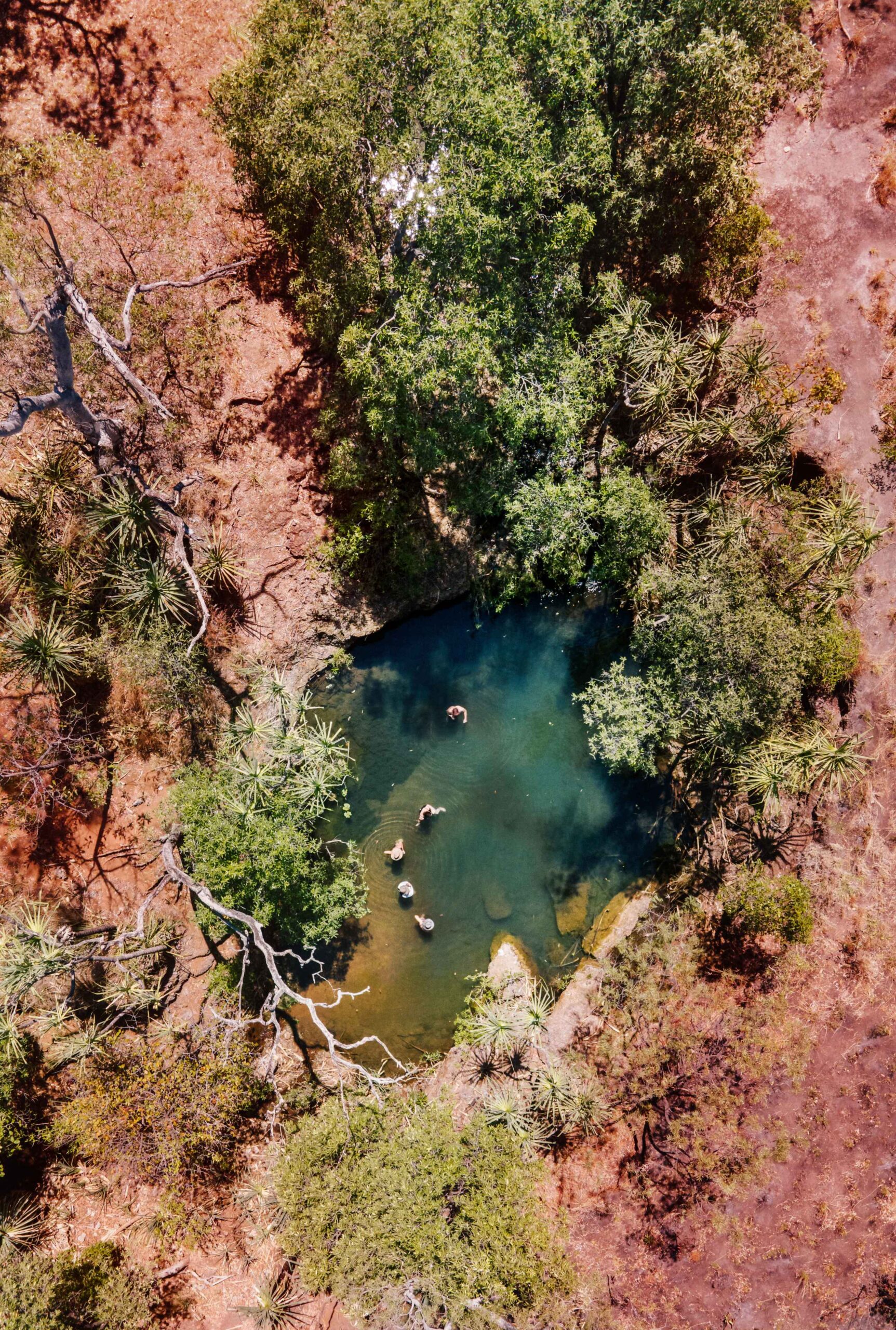
In the remote reaches of the Northern Territory, conservation-driven Bullo River Station offers an authentic outback experience with a mission to reignite a love and respect for our ancient lands
Out of the corner of my eye I sense movement, and I whip my head around, eyes wide. I’m in the Northern Territory, home to one of the world’s most cunning predators – saltwater crocodiles – and consequently this city girl is on high alert. It’s fresh in my mind that just the night before, while enjoying a delicious meal of unctuous handmade gnocchi with mushrooms, broccolini and tomato, I had signed a waiver. “This is just to confirm that we are in a dangerous area and you will follow our instructions at all times. When we say stop, you stop,” says Sandi from guest services – at the wise moment I’m halfway through a moreish glass of chilled Voyager Estate Nouveau Rouge.
I shouldn’t have worried. For starters, I am staying at the remote – yes – but very safe working cattle station and homestead, Bullo River Station. And secondly, it was only a hen, plucking away at something on the ground as it ambled past the doors of my pool-front room with all the arrogance of a paying guest.
The hens at Bullo River Station – all 24 of them – are the true definition of free range. These blessed birds have run of the land at Bullo, picking at the lawn, meandering past the pool and foraging around the guest wing by day; before fatherly chef David Rayner puts his feather babies to bed in their luxe chicken coop each evening. What a life, I think – thinking as much about the chickens as myself as I take in the beauty of the grounds before me, which is but a speck in the 162,000 hectares that make up Bullo River Station’s parcel.
Low-impact luxury
Just 15 per cent of this vast expanse is developed for Bullo’s accommodation and cattle grazing, with the remaining 85 per cent dedicated conservation areas. Owners Alexandra and Julian Burt believe that cattle grazing and conservation can coexist harmoniously, and the station implements innovative cattle and pasture management practices to reduce environmental impact. These include rotational grazing, repairing gully erosion and responsible water usage. In 2017 the property also began a 10-year partnership with the Australian Wildlife Conservancy (AWC), whose representatives frequently visit Bullo to take out scientific biodiversity monitoring, research, weed control, planned burning and feral herbivore management for weeks at a time.
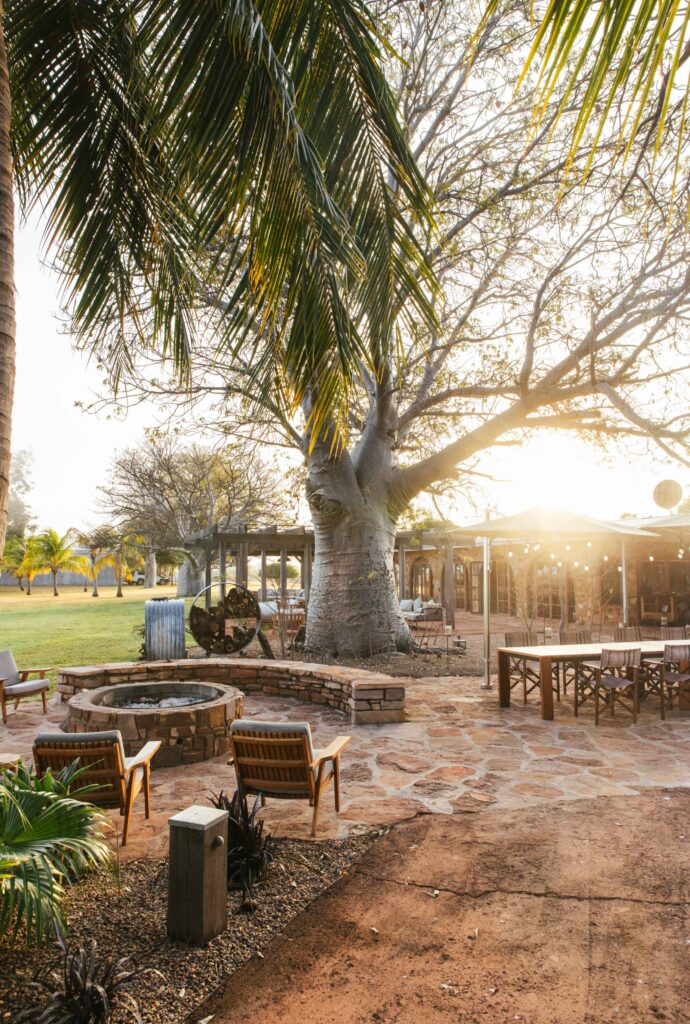
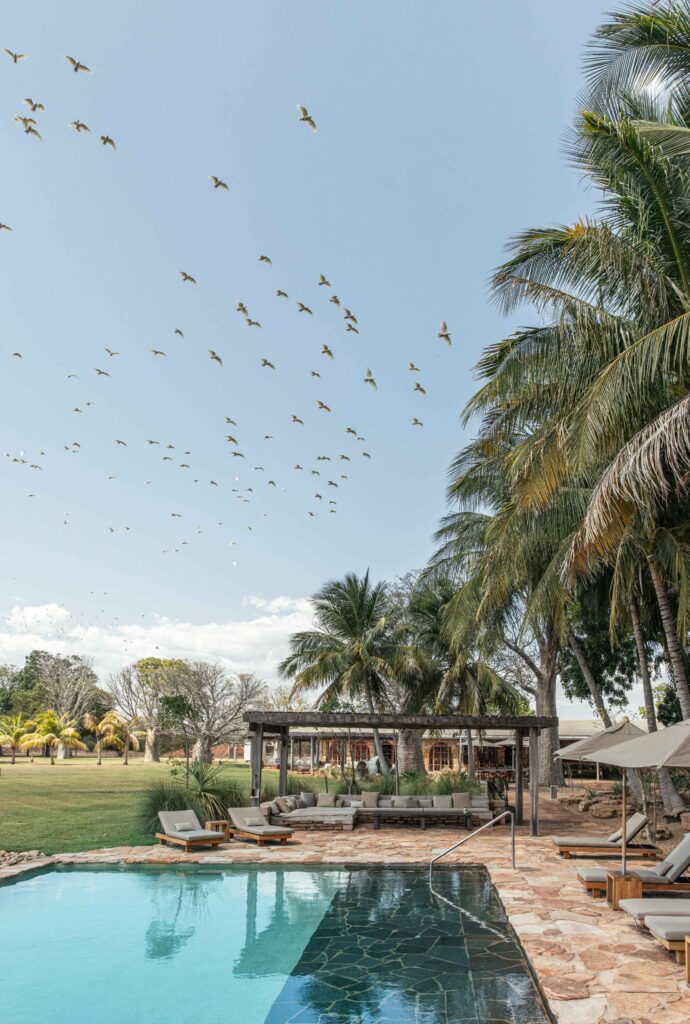
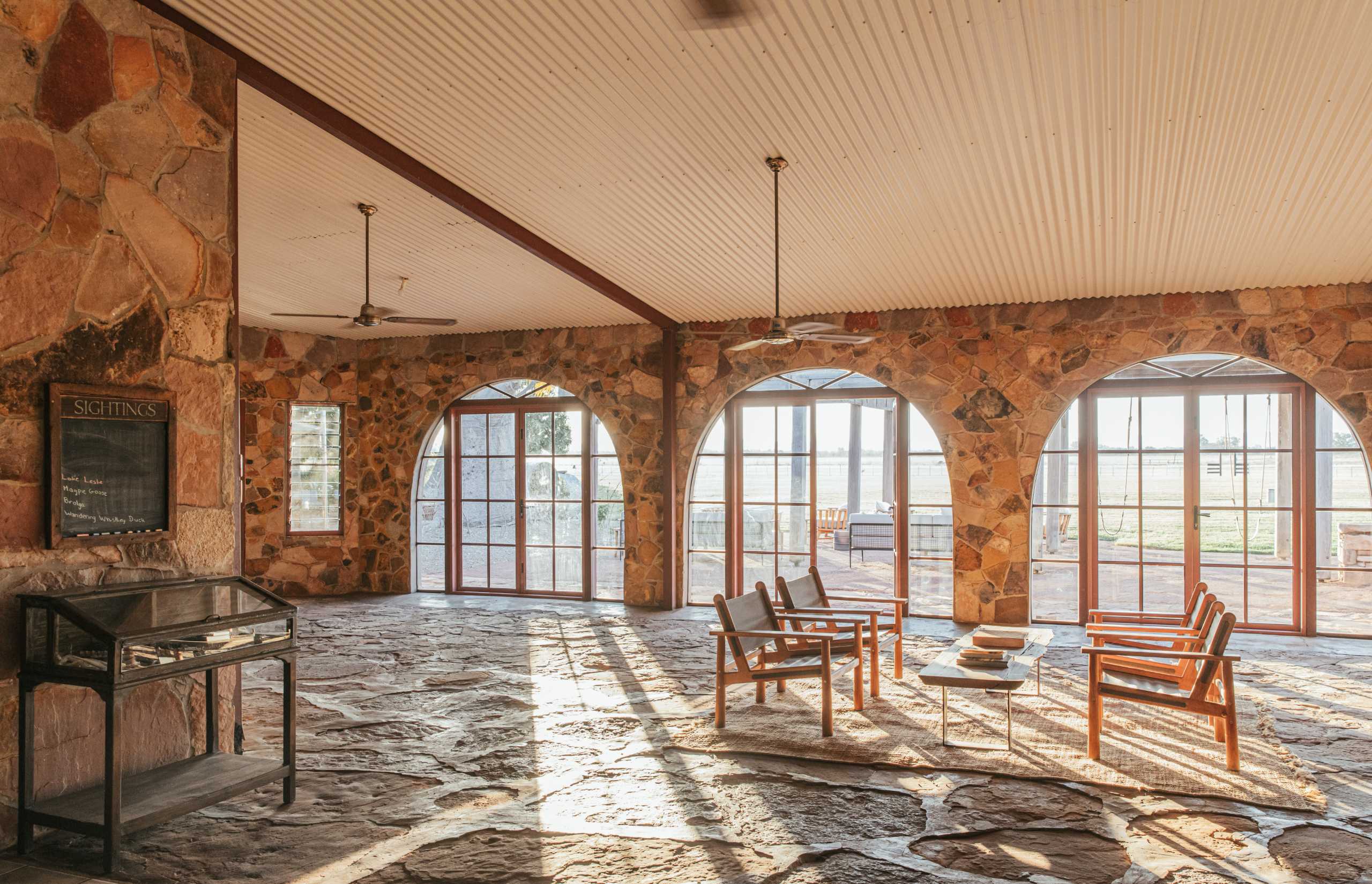
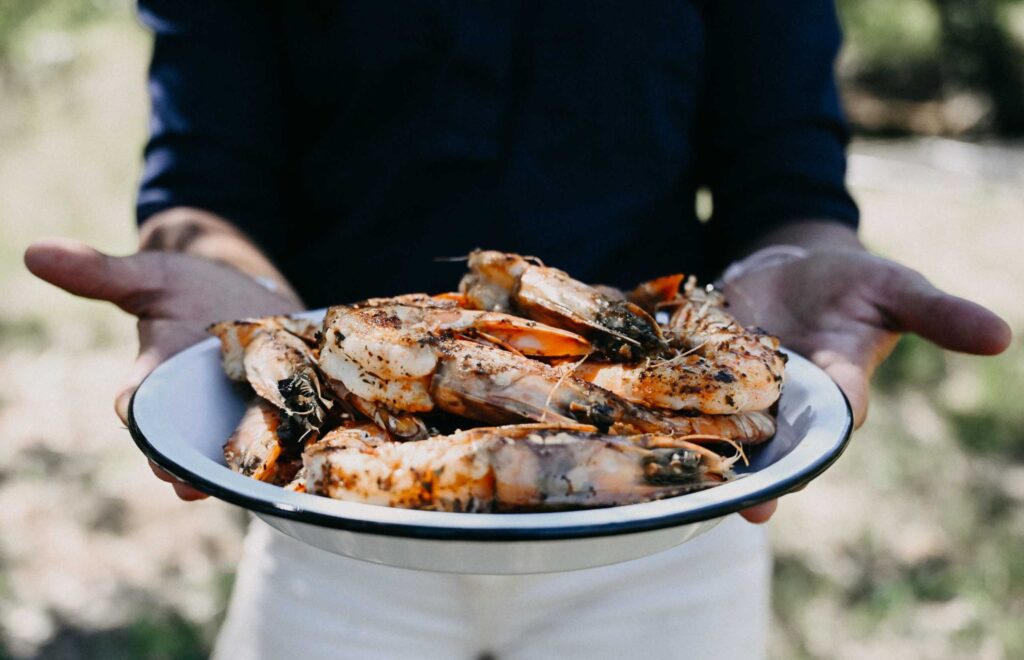
As a low-impact luxury tourism destination, Bullo’s sustainability ethos is highly visible. Some 80 per cent of the station’s electricity is powered by solar, and around half of all fruit and vegetables are grown on the property for staff and guests. The station composts most of its green and organic waste for use back in the vegetable garden, and single-use plastic is nowhere to be found. Its mission is to foster its guests’ connection to the land, its complex ecosystems and its wildlife, and each room contains a booklet listing the confirmed native animal species sighted on the property. The latest count is 309, including 32 mammal, 67 reptile, 184 bird, 20 frog and six fish species.
Beyond my interactions with the domestic animals at the station – cuddling the aforementioned hen, Eva, and patting one of the resident water buffaloes, Bertha, who has a penchant for grated carrot and licking people’s jeans – I witness numerous wildlife thriving in their natural habitats during my brief 2.5 days at Bullo. It’s a twitcher’s delight: there are pairs of wedge-tailed eagles (the largest bird of prey in Australia) and white-bellied sea eagles, red-tailed black cockatoos, magpie geese, green pygmy geese, red-winged lorikeets, black-necked stalks and jumpy, fluttery finches (the endangered Gouldian finch, star finch and masked finch have also been sighted at Bullo). I also see various reptiles, including – during the 45-minute helicopter ride from Kununurra to the homestead – a few of the deadly, prehistoric variety. Saltwater crocodiles (‘salties’) are a common sight on the sunny banks of the Bullo River. From my position high up in the sky, it feels good to be at the top of the food chain.
At first light I am whisked away in a light-as-a-feather chopper, doors notably absent, as we soar over rippling countryside, a patchwork of green from the just-ended wet season

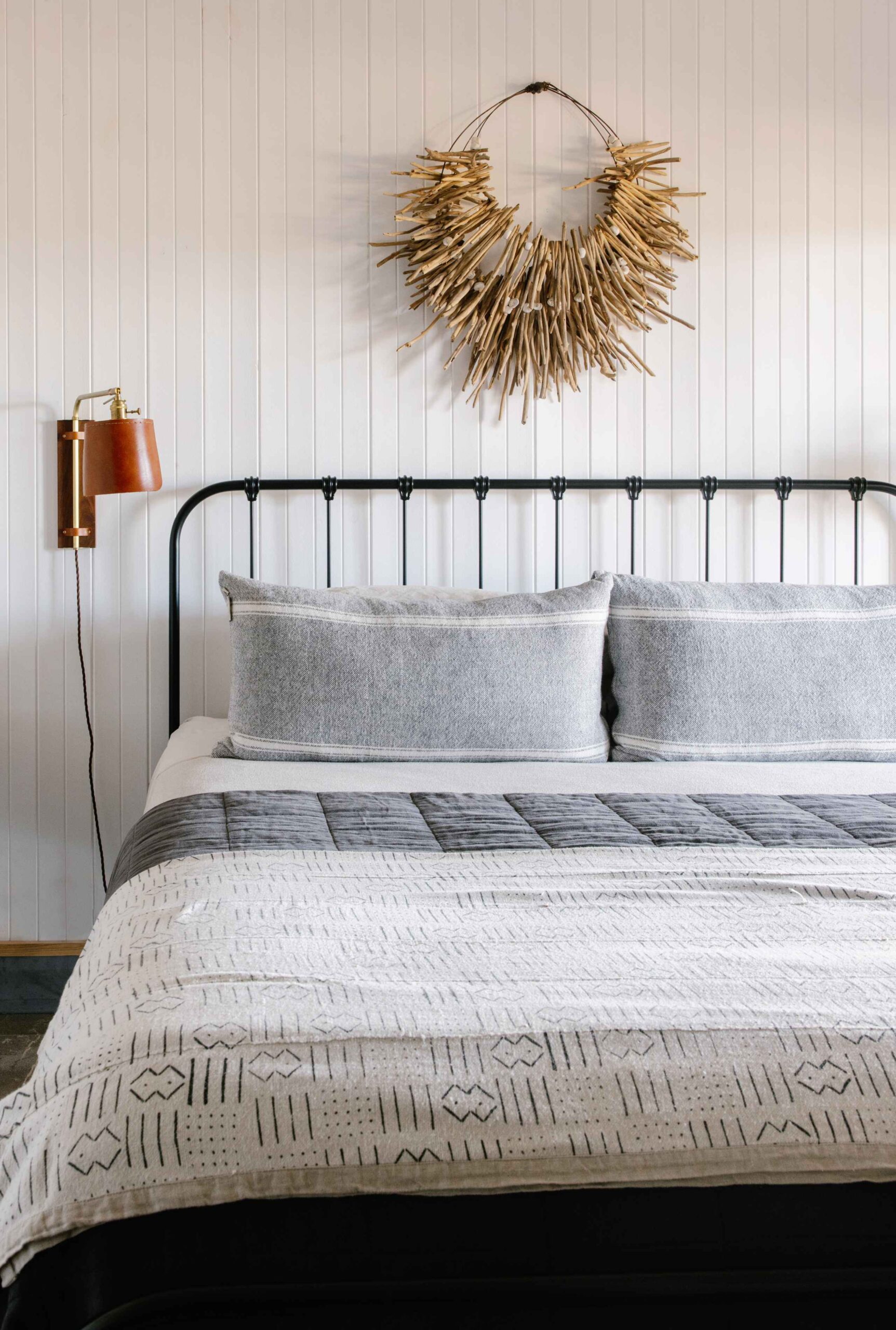
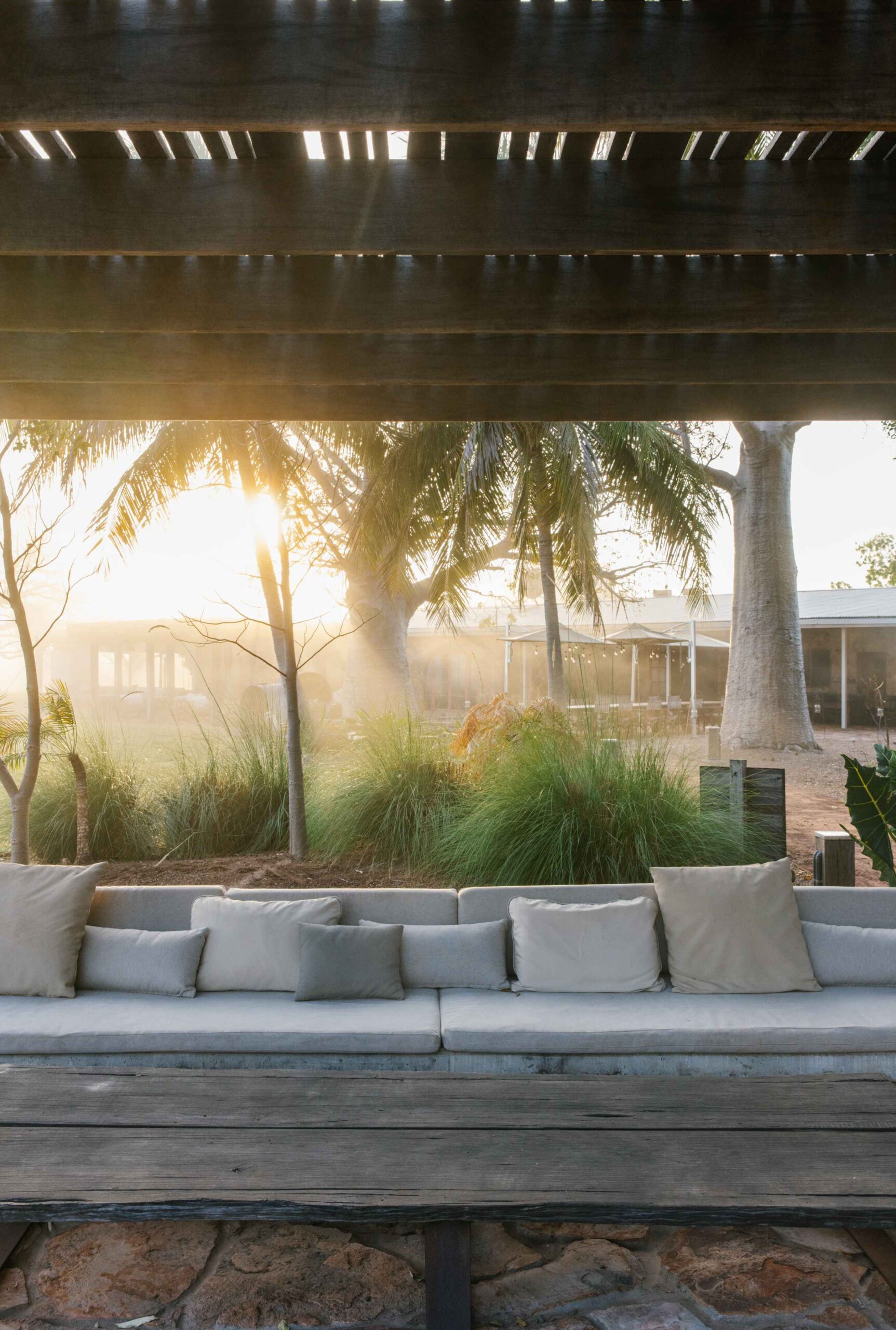
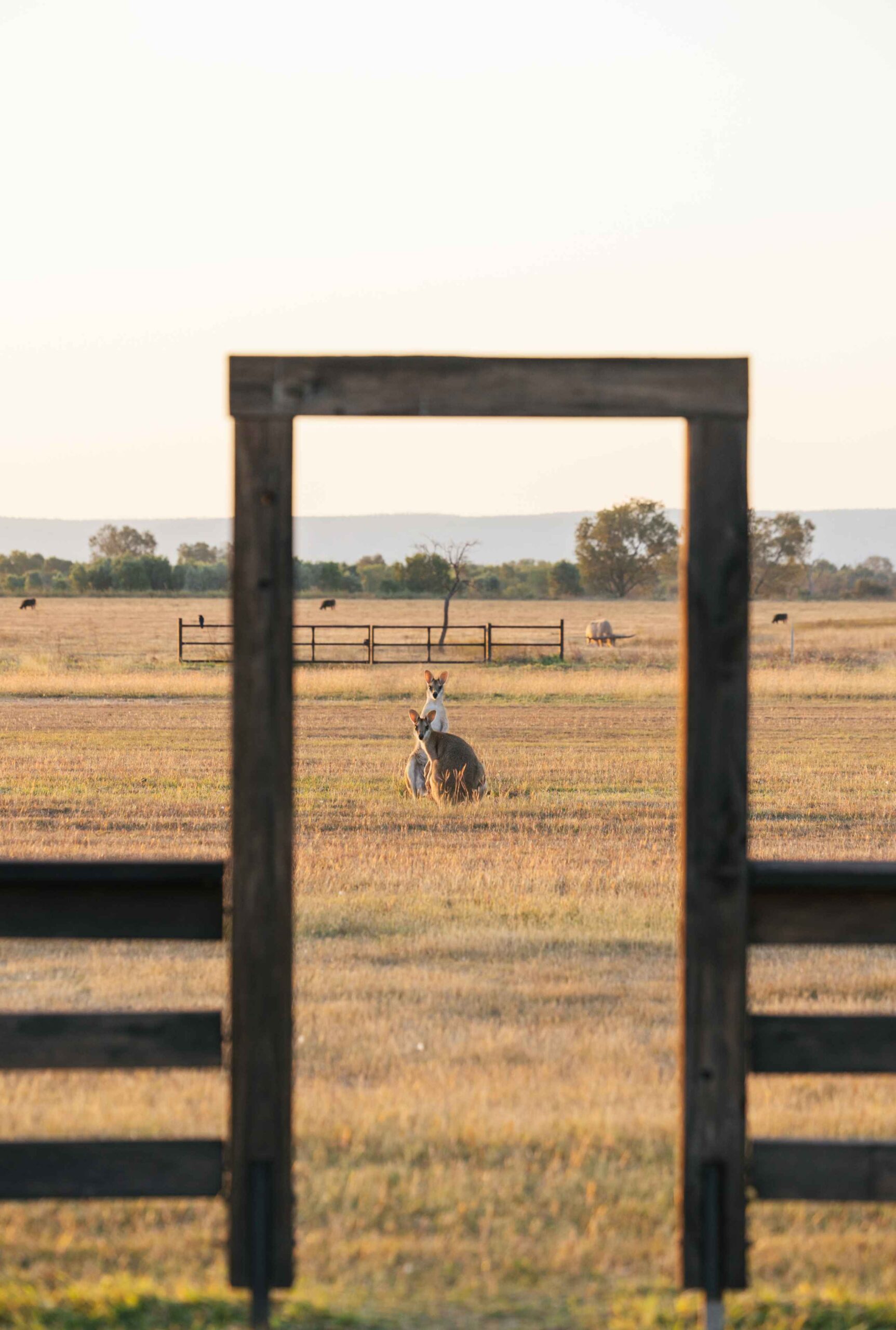
Outback exploring
If the croc-spotting helicopter ride didn’t give it away, it’s all about the outdoor adventure at Bullo. At this all-inclusive property, guests are given the schedule for the following day’s activities on a hand-written card – along with an amusing tale from the homestead’s history – upon turndown each evening. On my first morning at Bullo, after reaching the end of its 75-kilometre driveway (an adventure in itself), guide Ryan takes me to a protected rocky sandstone outcrop with charcoal-blackened earth underfoot. This detail is a clear sign the site was once used as a camp by Indigenous communities – thought to be the Miriuwung-Gajerrong people. A near-perfectly preserved mural of Indigenous rock art reveals itself, the white, yellow and red ochre depicting the shapes of men, snakes, fish and revered deities. The site is estimated to be around 2,000 years old, and yet I can’t tear my eyes away from the small handprints, which appear as though they could have just been left by a child a few years older than my daughter.
Touring rock art sites with Bullo’s guides is just one of the myriad immersive cultural activities on offer. Others I experience include swimming at (safe) waterhole ‘Marlee’s Bath’, followed by a gourmet bush barbecue (Bullo wagyu steak and sausages, pumpkin macadamia salad, homemade focaccia). Another morning is spent bird-watching while wandering around a billabong. A 4WD journey also takes me to ‘Dingo Boab’ – the most magnificent boab tree I’ve ever seen, with a 14.7-metre-wide canopy and a bulbous trunk that dwarfs mere mortals. There’s the scrumptious lunch at a remote hilltop site overlooking majestic Lesley Lake, and sunset drinks beneath fairy lights strewn over boab branches, with agile wallabies snacking and playfully boxing nearby. I even manage to squeeze in a stargazing lesson under a clear, light-pollution-free sky, and witness a dusty-aired muster in action at the impressive cattle station.
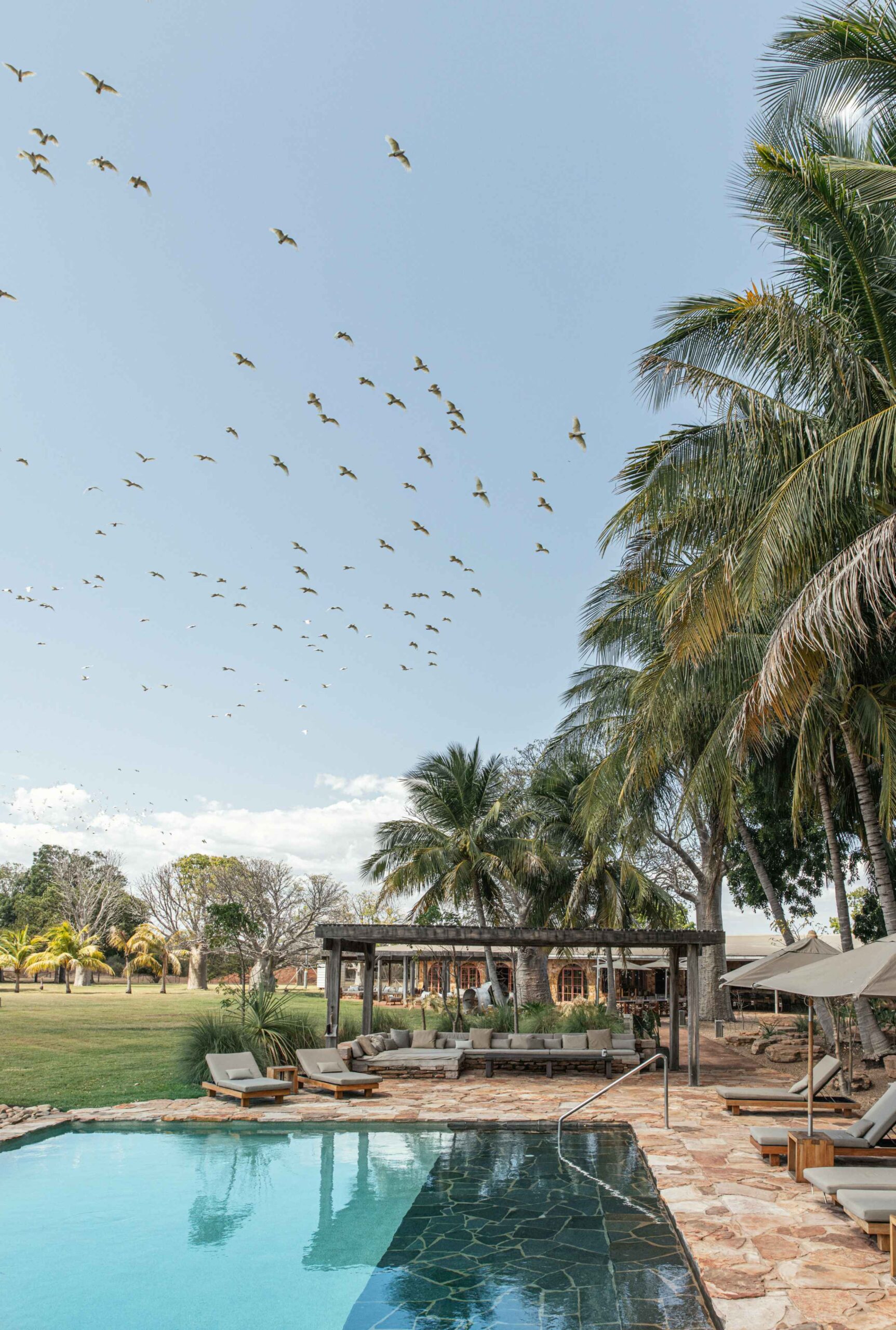
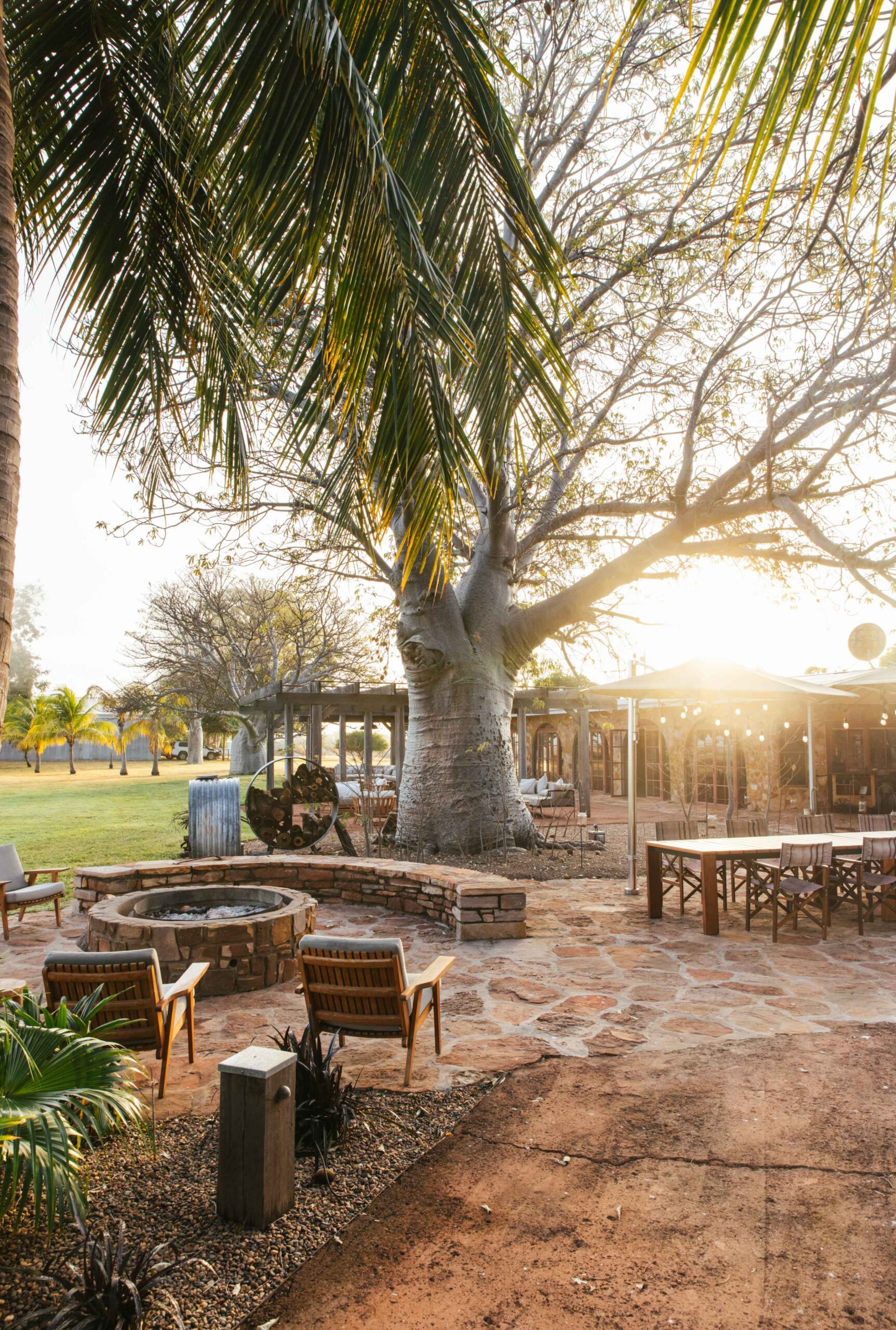
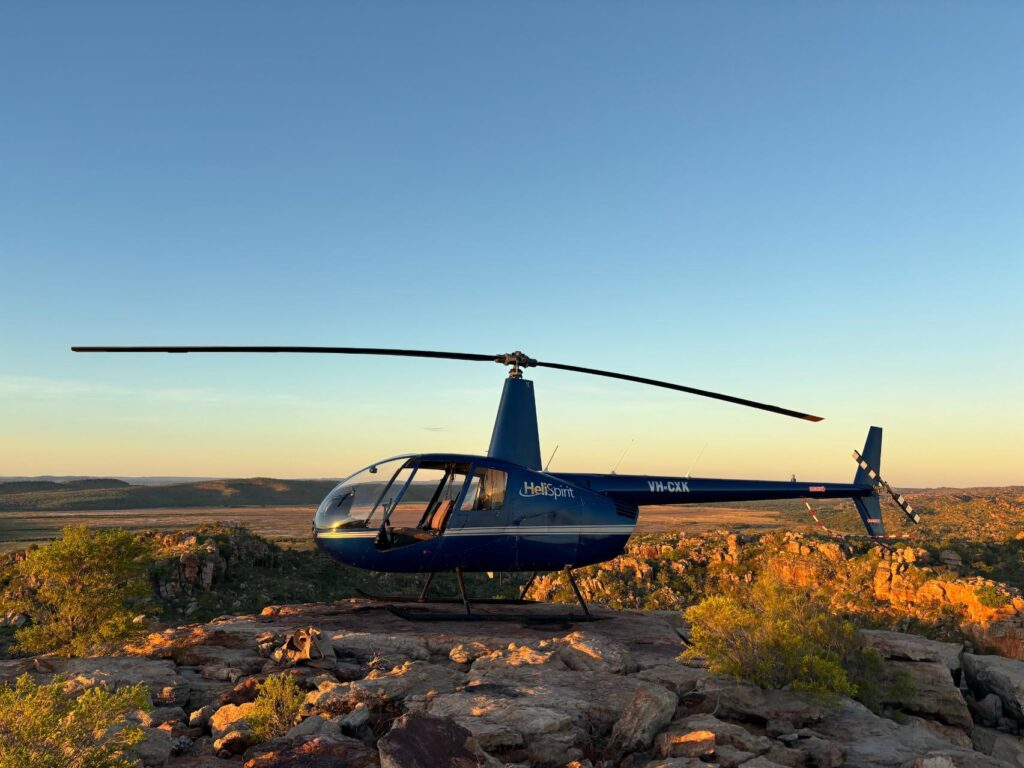
For the adrenaline junkies for whom these activities are mere child’s play, there are the heli adventures, and Bullo saves the best until last during my stay. On my final morning, the staff instructs me to be ready at 6:45am, and at first light I am whisked away in a light-as-a-feather chopper, doors notably absent, as we soar over rippling countryside, a patchwork of green from the just-ended wet season. I marvel as the skilled pilot, without breaking a sweat, elegantly lands at the teeny-tiny summit of a rocky outcrop with 360-degree views of the Victoria River and beyond, before setting up my very own sunrise viewing spot – chairs, breakfast and all. Like he hadn’t done enough.
God’s country
Northern Territory native Ryan tells me that the land surrounding Bullo River Station – with its beautiful boabs, sandstone gorges and waterfalls – “feels more like the Kimberley than the NT”. This land, regardless of state lines, is at the very heart of the experience at Bullo, one that I’m told many international guests choose because they are seeking an authentic outback experience. It makes me think: avid travellers that we Australians are, it’s easy to set our sights on the world beyond our borders. But when it’s time to return home, thank goodness there is a place like Bullo to remind us of the beauty found in our own backyard – a place to come back down to Earth.
Hotel Notes
Bullo River Station’s guest season runs during the NT’s dry season, from April to September. Nightly rates start from $1,350 per person, per night, on an all-inclusive basis, including meals, refreshments and beverages, daily on-station activities, private guided tours and a short scenic helicopter flight. Flights and transfers are not included.
Getting There
Bullo River Station is accessible by private air charter or helicopter from Darwin or Kununurra, as well as from other homesteads in the region. The station can also be accessed via Victoria Highway (4WD required). Contact the station for suggested flight operators and driving instructions as the roads are not accessible at all times.
When to Visit
April
Guests will find full waterholes and waterfalls flowing at their best. While it can still be quite humid during April, the payoff is being rewarded with lush, green landscapes. This is also prime fishing season at Bullo River Station.
May
The rains and the last of the clouds will have disappeared, bringing warm, dry days, ideal for outdoor exploring.
June & July
The peak of the dry season, daytime temperatures still reach a pleasant 30°C, but the evenings are cool. The dryer months also set the stage for unparalleled stargazing opportunities.
August & September
Arguably the best months to visit for bird enthusiasts. Birdlife congregates around the last remaining waterholes, making it easier to spot them.
Wine in the Wild
Bullo River Station’s ‘Wild Wine Escape’ will return in 2025 (2024 has sold out) from 5-8 September and will be hosted by Voyager Estate’s chief winemaker, Tim Shand. During the four-day retreat, guests will delve into a distinct luxury and epicurean experience combining the very best of Australian wine, food and outback discovery. Alexandra
Latest Articles
Don't miss the latest from Luxury Travel
